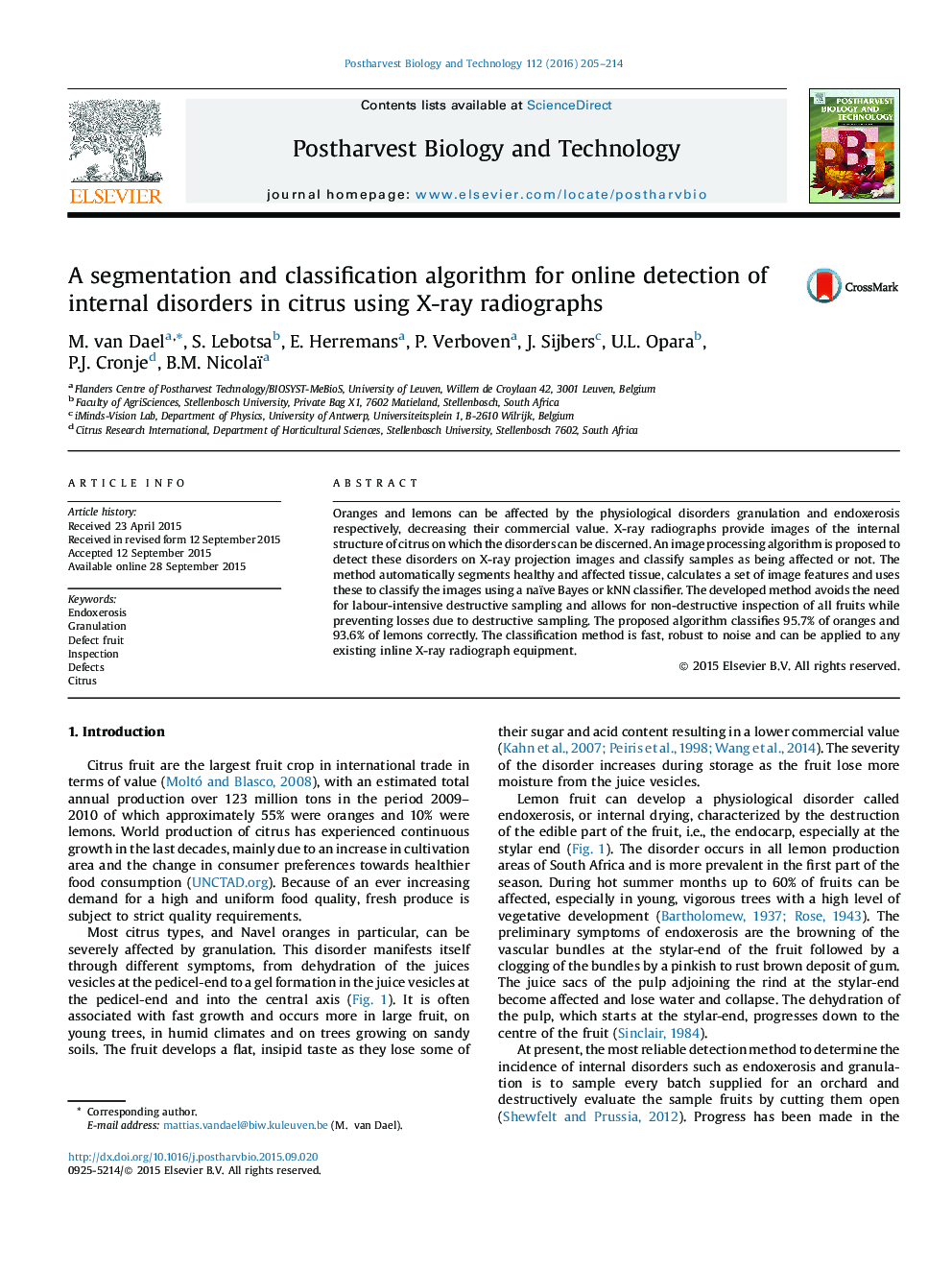| Article ID | Journal | Published Year | Pages | File Type |
|---|---|---|---|---|
| 4517939 | Postharvest Biology and Technology | 2016 | 10 Pages |
•CT scans of oranges and lemons with expected high degrees of defects were taken.•Radiographs were simulated to take random fruit orientations into account.•An image processing algorithm to detect defects on radiographs is proposed.•Performance of difference classifiers was compared, with and without noise.•The proposed algorithm classifies 95.7% of oranges and 93.6% of lemons correctly.
Oranges and lemons can be affected by the physiological disorders granulation and endoxerosis respectively, decreasing their commercial value. X-ray radiographs provide images of the internal structure of citrus on which the disorders can be discerned. An image processing algorithm is proposed to detect these disorders on X-ray projection images and classify samples as being affected or not. The method automatically segments healthy and affected tissue, calculates a set of image features and uses these to classify the images using a naïve Bayes or kNN classifier. The developed method avoids the need for labour-intensive destructive sampling and allows for non-destructive inspection of all fruits while preventing losses due to destructive sampling. The proposed algorithm classifies 95.7% of oranges and 93.6% of lemons correctly. The classification method is fast, robust to noise and can be applied to any existing inline X-ray radiograph equipment.
